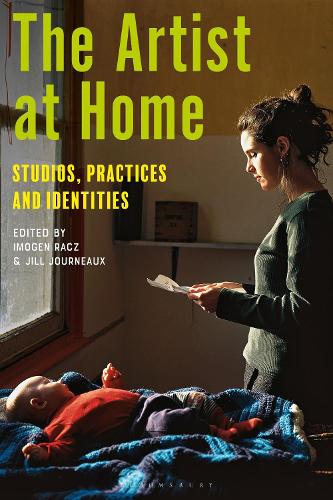
The Artist at Home: Studios, Practices and Identities
(Paperback)
Available Formats
Publishing Details
The Artist at Home: Studios, Practices and Identities
By (Author) Dr Imogen Racz
Edited by Jill Journeaux
Bloomsbury Publishing PLC
Bloomsbury Visual Arts
24th July 2025
United Kingdom
Classifications
Professional and Scholarly
Non Fiction
Social geography
Sociology: work and labour
Architecture
709.22
Physical Properties
Paperback
270
Width 156mm, Height 234mm
Description
Artists have worked from home for many reasons, including care duties, financial or political constraints, or availability and proximity to others. From the home studios of Charles and Ray Eames, to the different photographic representations of Robert Rauschenbergs studio, this book explores the home as a distinct site of artistic practice, and the traditions and developments of the home studio as concept and space throughout the 20th and into the 21st century. Using examples from across Europe and the Anglophone world between the mid-20th century and the present, each chapter considers the different circumstances for working at home, the impact on the creative lives of the artists, their identities as artists and on the work itself, and how, sometimes, these were projected and promoted through photographs and the media. Key themes include the gendered and performative aspects of women practising at home, collaborative studio communities of the 1970s 90s including the appropriation of abandoned spaces in East London, and the effects of Covid on artistic practices and family life within the spaces of home. The book comprises full-length chapters by artists, architects, art and design historians, each of whom bring different perspectives to the issues, interwoven with short interviews with artists to enrich and broaden the debates. At a time when individual relationships to home environments have been radically altered, The Artist at Home considers why some artists in previous decades either needed to or chose to work from home, producing work of vitality and integrity. Tracing this long tradition into the present, the book will provide a deeper understanding of how the home studio has affected the practices and identity of artists working in different countries, and in different circumstances, from the mid-20th century to the present.
Reviews
This original and multifaceted book interweaves artists interviews with contributions from art historians, design historians and architects. Surveying the domestic and creative functions of the studio alongside its performative role, it makes a compelling case for the enduring cultural significance of these extraordinary places. * Louise Campbell, Emeritus Professor, History of Art, Warwick University, UK *
Insightful and timely, with a wealth of fascinating case studies and approaches, this book offers crucial new perspectives on the competing pressures of the domestic and the professional, and the myriad ways in which artists have negotiated, resisted or embraced them. * Clare ODowd, Research Curator, the Henry Moore Institute, UK *
Demystifies the trope of the artists studio as a mythical (and separate) space of creativity, helping to expand and enrich its modern definition. Accessibly written and hugely informative, it will be of interest to researchers, artists, art students, architects, designers and cultural theorists. * Gill Perry, Emeritus Professor of Art History, The Open University, UK *
Author Bio
Imogen Racz is an art historian and former Associate Head of School for Research at Coventry University, UK. She is the author of British Art of the Long 1980s: Diverse Practices, Exhibitions and Infrastructures (Bloomsbury, 2020) and Art and the Home: Comfort, Alienation and the Everyday (Bloomsbury, 2015). Jill Journeaux is Professor of Fine Art at Coventry University, UK, and Director of Drawing Conversations. She has published on expanded drawing practices, including Body, Space and Place in Collective and Collaborative Drawing (2020) and Collective and Collaborative Drawing in Contemporary Practice (2017).
